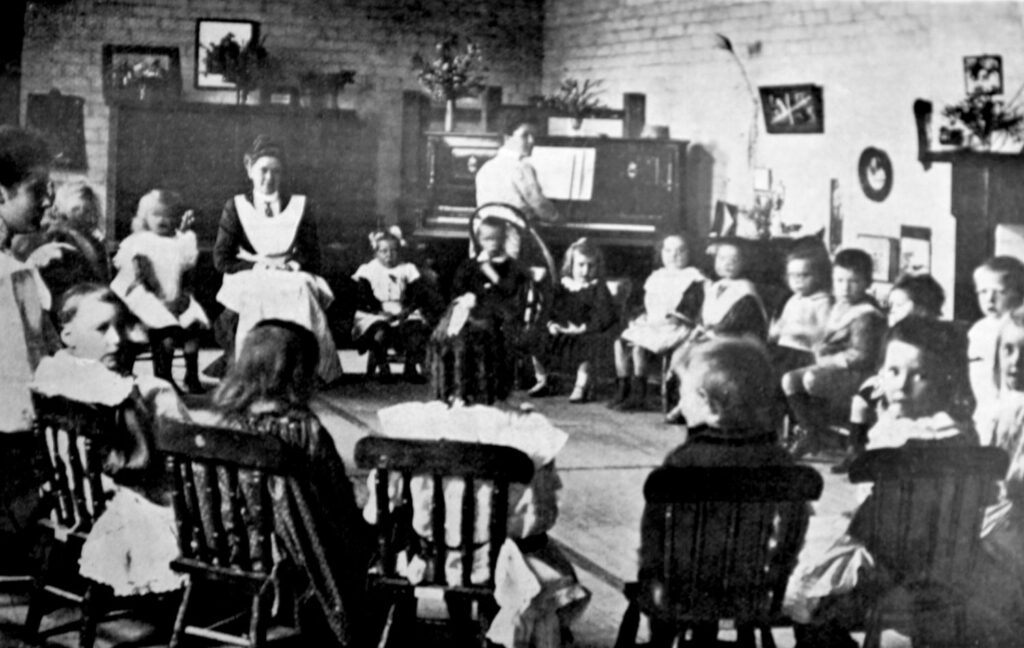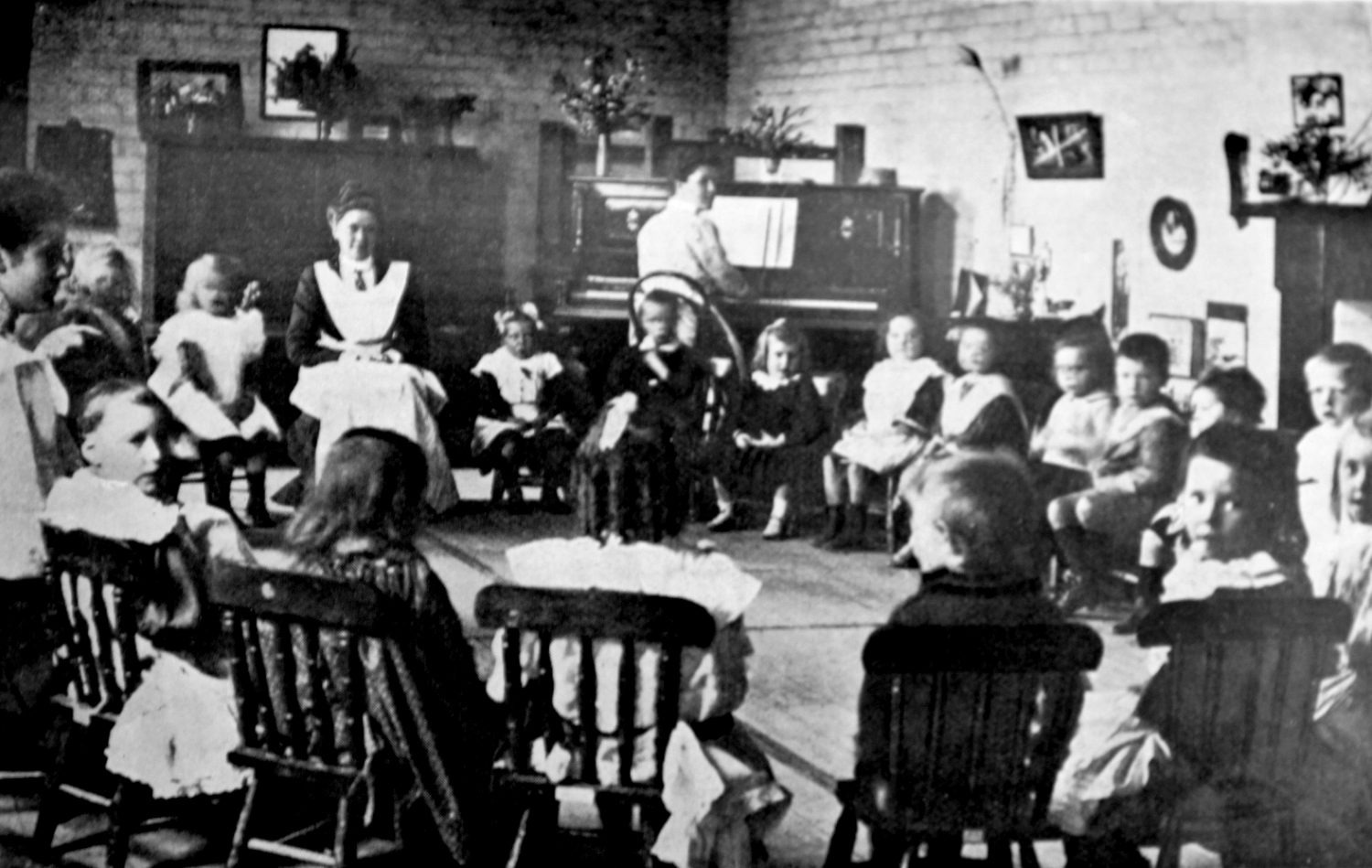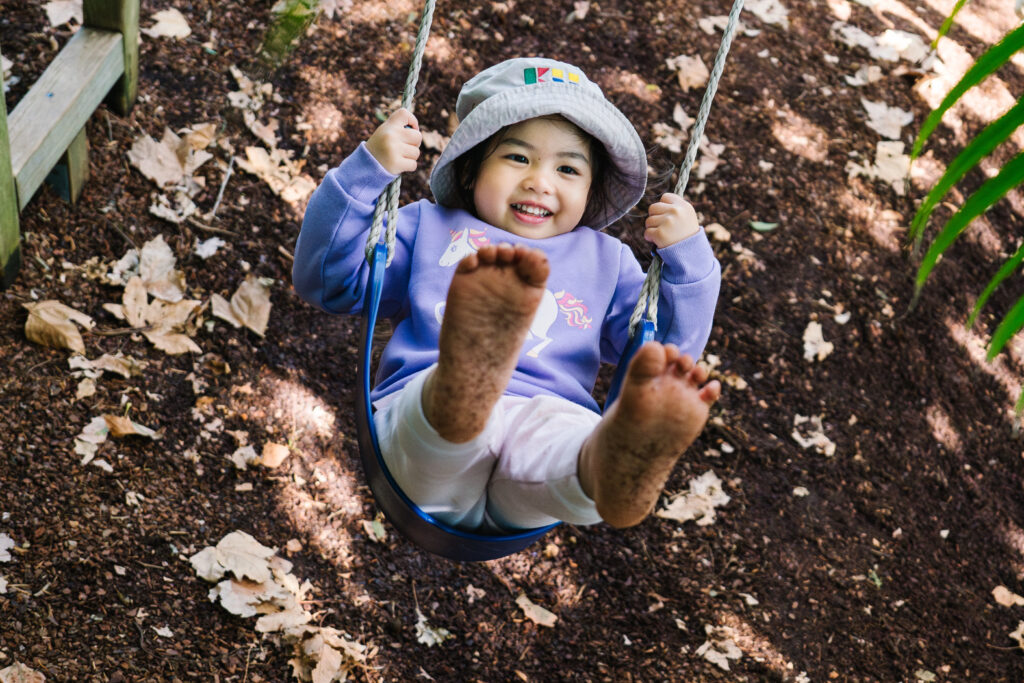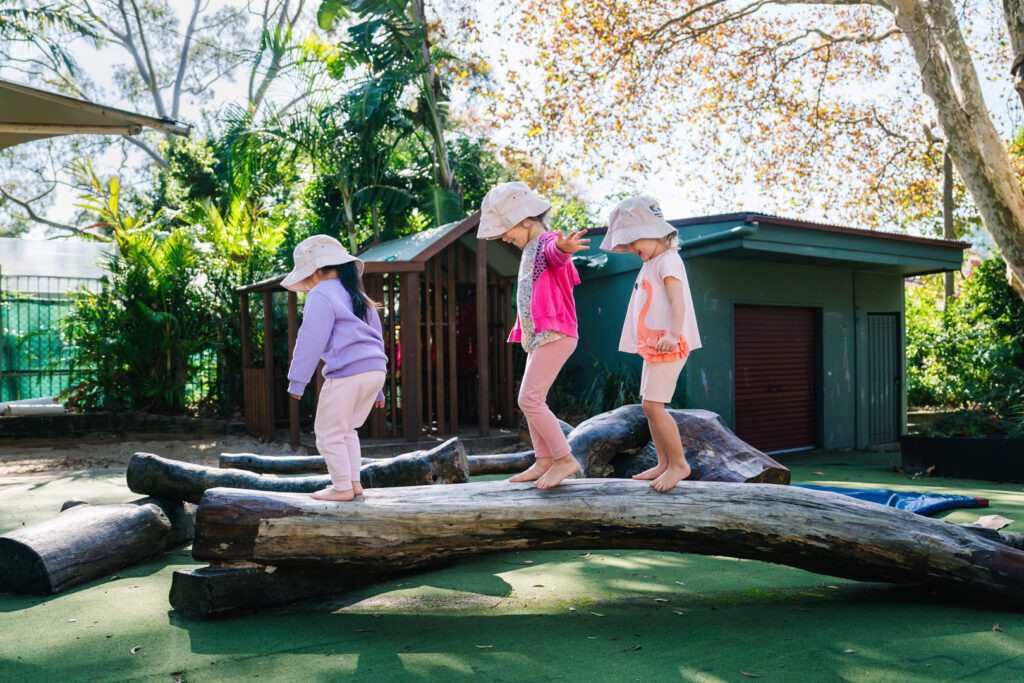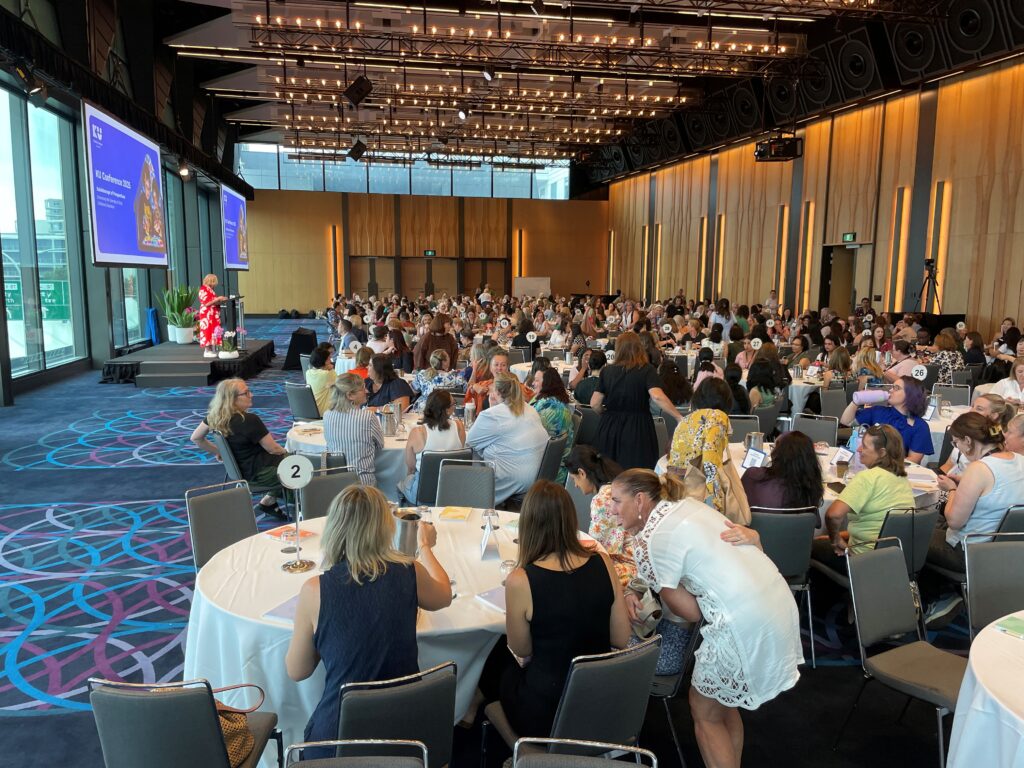The Kindergarten Union of New South Wales “was born into an unsympathetic world” in July 1895. At this time, education for very young children in Australia is virtually non-existent. A few kindergartens operate in private schools but these are out of the reach of most families. Though many children under six years of age attend public schools, dominant educational practices, such as rote learning, are ill-suited to their needs.
A small group of educational reformers advocate for Fröebelian kindergarten methods for public schools, largely unsuccessfully. In mid 1895, one of these advocates – Maybanke Wolstenholme (later Anderson) receives a copy of an annual report of the Golden Gate Kindergarten Association in San Francisco. Inspired, she and a small group of like-minded enthusiasts “determined to launch a little venture” to establish Free Kindergartens for Sydney’s poorest children and advocate for kindergarten methods.
The provisional committee of the Kindergarten Union of NSW holds its first meeting in July 1895, in the drawing room of one of the advocate’s homes. The small group of attendees include suffragettes, social and educational reformers, along with teachers drawing on a variety of backgrounds and experience in kindergarten thought and teaching.
At the Committee’s second meeting (August 23 1895) in Quong Tart’s tea rooms in King Street, Sydney, Mrs Davenport is elected Secretary, Mrs Rich, Treasurer and Mrs Wolstenholme, Vice-President. The wife of the NSW Governor, Lady Hampden is invited to become President – and so begins a strong association between the Kindergarten Union of NSW and the wives of successive NSW Governors.
With only £50 in its coffers, the Kindergarten Union opens the first Free Kindergarten in Australia in Sussex Street Mission Hall on January 6 1896 – with 3 children attending. The conditions of the property are so poor that the Union closes the Kindergarten very shortly after and on February 10 1896 it moves to Charles Street, Woolloomooloo, under the Directorship of Fraulien Scheer (a kindergarten teacher trained in Hamburg), with the voluntary assistance of Mrs Dane.

